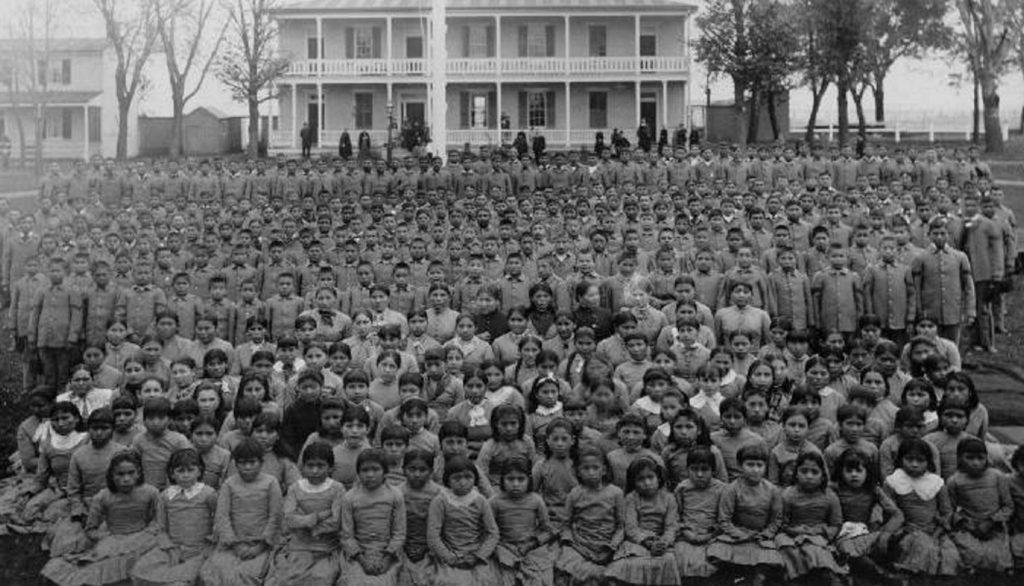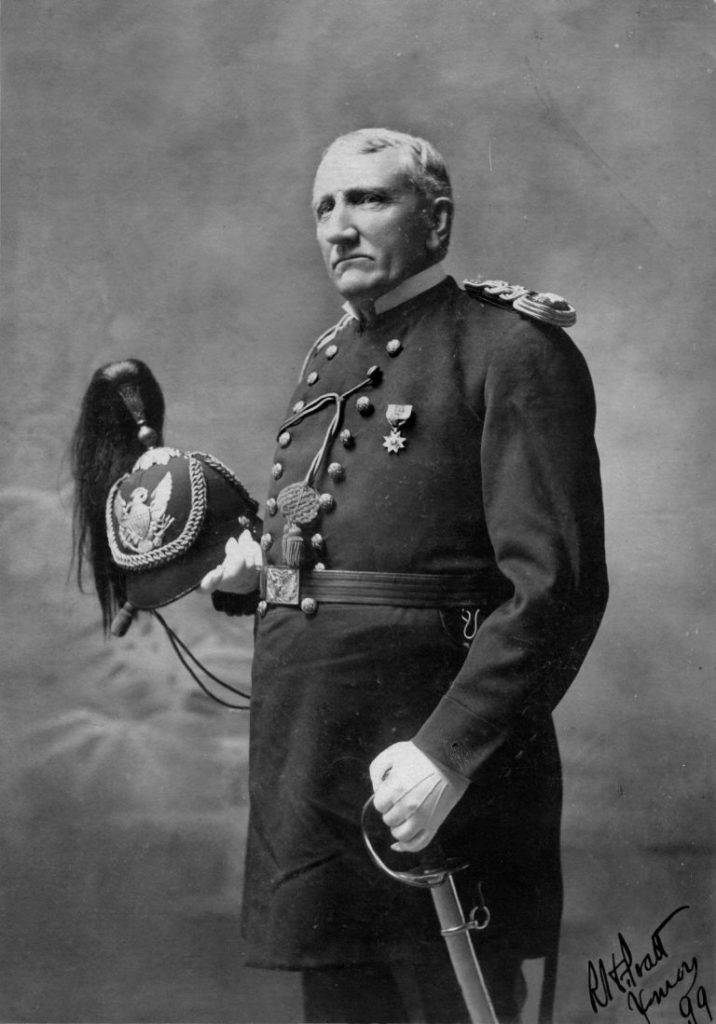Editor’s note: This story was updated Oct. 4, 2023. Find the original story below.
A rural Nebraska school district must pay more than $200,000 in damages and implement new policies after settling a lawsuit Wednesday brought by two Native American mothers who alleged a school employee cut their children’s hair without permission.
On May 17, 2021, the ACLU of Nebraska filed the civil rights lawsuit in federal court on behalf of the mothers, Alice Johnson and Norma LeRoy, who are both Lakota. The lawsuit named the Cody-Kilgore Unified School District in north-central Nebraska, as well as its principal/superintendent and an administrative assistant, as defendants. Later, Harvard Law School’s Religious Freedom Clinic joined the suit to represent the family.
The women said the haircuts – which school officials said were intended to check for lice – violated their religious and cultural values.
The parties reached a settlement in the form of a consent decree filed Wednesday. It requires the school to receive written permission to cut students’ hair and add language to the staff handbook about head lice checks. It prohibits school officials from requiring or encouraging hair cutting as part of the lice check process.
The settlement also requires the school to educate staff on Native American culture, recognize Indigenous Peoples Day and Native American Heritage Month starting in 2024.
The school district also must pay Johnson and LeRoy $227,500 total in damages to be divided into quarters among the mothers and their two children named in the lawsuit.
The settlement follows state legislation passed earlier this year that requires Nebraska schools to implement consistent dress and grooming standards that protect students from discrimination. The legislation was partially motivated by Johnson and LeRoy’s experiences.
An attorney for the school district did not return a phone call requesting comment Wednesday.
“In our culture, we believe our hair is our essence,” Johnson said in an ACLU press release. “And although that part of my children has been taken from them, I am at peace knowing that school officials will never cut the hair of a child ever again and Native children will have access to a learning environment that will learn to understand and respect our culture.”
Original story: A school sees a lice check. Lakota people sense centuries of repression.
It’s early summer and a Lakota woman stares into the trees, deep past the leaves and their shadows, her dark eyes misting up. Not far away, her daughters run through the park, a creek-fed oasis in the middle of the arid, amber Sandhills of Nebraska.
Norma LeRoy tries to understand why a school secretary cut her two little girls’ hair without her consent in the spring of 2020. And then, days later, did it again. The secretary was checking for lice, LeRoy was told — lice the mother said they never found.
It’s a new semester now, and her daughters are pinballing through the park. But LeRoy still feels the weight of those snips of hair, feels like few in this remote region of Cherry County understand what they took from her family. It’s why the 36-year-old Rosebud Sioux has to turn away from her kids, toward the trees, to shield them from her tears.
To her people, hair is sacred. Cutting it outside Lakota tradition carries consequences.
“Happiness, the goodness, the wellness of life, that takes all that away,” LeRoy said. “And so that’s the reason why we, as Native Americans, look at our hair strongly. Because it comes from the spirit world, and it was given to us.”
In Kilgore, population 79, less than four miles from South Dakota’s Rosebud reservation, hair cutting dredges up dark, generations-long history. Stories of boarding schools where they sheared the jet black hair of Native Americans to make them look more like white people. Like those boarding school kids, LeRoy and her wife Alice Johnson say their little girls — ages 12 and 7 — also lost something. They don’t laugh the same way. They don’t play like they used to. And immediately before and after the hair cutting, three of their grandmothers died.
Wàkuza.
It invited bad luck, LeRoy said.
When the Lakota mothers offered to bring cultural sensitivity training to the school they got little response, they said. When they explained why cutting hair went against their religion, culture and traditions, they said they were ignored.
“You don’t get lice if you have clean hair,” LeRoy said the secretary told her.
Other residents say the secretary’s good heart shouldn’t be ignored, either.
George Johnson, a retired rancher in Cody, 15 miles from Kilgore, said he’s known the school secretary’s family for years. Johnson, who now brews small-batch vinegars through George Paul Vinegar, served on the school board decades ago when it hired the secretary.
Without a principal, the secretary led the school, Johnson said, caring for his kids and many others. She advocated for children whose families couldn’t afford backpacks, coats or boots. Occasionally, the school has trimmed hair to stop the spread of lice, Johnson said. While he doesn’t know what happened in this case, Johnson said if it happened, there was a reason.
“[She] did not do this out of animosity, punishment or anything else,” Johnson said. “She did it to help the children and keep the school safe. She’s not that type of person, I guarantee you.”
On May 17, the two mothers filed a lawsuit in federal court in Lincoln against the Cody-Kilgore Unified Schools district. The mothers allege their first amendment rights were violated.
“It’s definitely resonating with parents,” said Rose Godinez, their attorney with the ACLU of Nebraska. “When you send a child to school, you expect them to come back to you safe, not violated, and that’s not what happened here.”
Calls, emails, text messages and Facebook messages sent to the secretary, school superintendent, former superintendent and all six school board members went either unanswered or the person declined to comment. The school’s lawyer, Chuck Wilbrand of Knudsen Law Firm in Lincoln, also declined to comment.
On July 15, the school and its attorney filed a motion to dismiss the case. School officials were unaware hair cutting was culturally insensitive, the motion reads, and the school’s former superintendent agreed not to cut the children’s hair in the future a little over a week after the parents discovered the first cutting.
But that did little to appease LeRoy and Johnson, who feel the school violated their family’s culture in the same manner that Native culture has long been violated.
“I just want people to understand that you cannot touch another person’s child,” Johnson said. “Every religion has beliefs. Every culture has beliefs that we have rules that we live by. And I want people to know that.”
Star Women
To understand the importance of hair to the Lakota, you need to know about the star woman.
Long ago, the story goes, a woman sat in the Big Dipper. Lonely, she grew her hair long enough to reach Earth. When she got here, she cut it.
“She cut it because she needed to come down here to build a life,” LeRoy said. “And for her to build that life, she used her hair. And so this is why we say that there are strict restrictions on women with long hair. Because their spirit lives within their hair. And once you cut that, part of their spirit’s gone.”
LeRoy grew up on these stories. She learned the Lakota language, ceremonies and traditions from her grandmother on the Rosebud reservation, where she has lived most her life. Johnson, 42, has family who live on the reservation, but grew up in Kilgore with a Native mother and white stepfather.
The two Lakota women met on Facebook in 2015 and married a year later. Each had daughters from previous marriages and after marrying had one more. They are raising their four children with Lakota traditions.
But they are also raising them in a small, mostly white, Nebraska town — which wasn’t a problem until March 2, 2020.
“I was like, ‘Wait, who cut your hair?’” Johnson said when her 10-year-old daughter told her about the incident. “And then I broke down. I broke down crying and I was like, ‘How could she take that from us?’”
The girls told their mother the school secretary did it. When they called the superintendent, he said it was a head lice check. The school’s student handbook doesn’t outline how lice checks are performed.
In its motion to dismiss, the school district says while hair cutting is not written policy, “… the School District would sometimes cut a single strand of hair that contained the louse and tape it to a piece of paper to show the family.” The school district said it made steps to remedy the situation, agreeing on March 13 not to cut the children’s hair again. It returned one strand to the family, to burn in accordance with Lakota beliefs.
The mothers say another daughter, who is autistic, said on March 5 her hair was cut. As the parents checked their 6-year-old’s head, they said patches of hair were missing. The school denies that allegation.
“I didn’t want her to cut it out,” one daughter, who wants to remain anonymous, whispered to a reporter.
“Did you tell her that?”
“No. She would have just cut it anyway.”
After the hair cutting, the two mothers drove to the Rosebud reservation. They went to see Waycee His Holy Horse, a spiritual leader, reservation police officer and LeRoy’s cousin.
When he saw their van pull into his driveway, His Holy Horse said he knew something was wrong.
“That’s very damaging, not just to their physical [health] but to their emotional, psychological and spiritual well being,” His Holy Horse said. “Their self image is going to collapse.”
That night, they performed sacred rituals to protect the children’s spirits. When it happened again two days later, the family returned to His Holy Horse.
“[I felt] hurt, betrayal, anger and confusion,” said Lila Kills in Sight, the spiritual leader’s mother who bathed the children with a sponge during the rituals. “We’re in a new era and I just thought everyone knew about Native people and how we do things.
“They acted like they didn’t do anything wrong.”
“Kill The Indian, Save The Man”
As the story circulated on social media, raw emotions surfaced. Grandparents shared stories of how their hair had been cut in boarding schools decades ago.
“Having the seventh, eighth, tenth generation having to go through it again … I mean, it’s just a big eye opener because it’s being re-lived,” LeRoy said.
On March 3, 1819, nearly 201 years to the day before the children’s hair was cut, the United States signed the Civilization Fund Act. That ushered in an era from 1860 to 1978 when boarding schools nationwide, including in Nebraska, separated Native children from their families, punished them for speaking their language, and often cut their long hair.
“… All the Indian there is in the race should be dead. Kill the Indian in him, and save the man,” Capt. Richard H. Pratt, who founded the Carlisle Indian Industrial School, famously said in 1892.
In 1884, Christian missionaries came to South Dakota’s Yankton Reservation and took eight-year-old Zitkála-Šá from her mother.
“I remember being dragged out, though I resisted by kicking and scratching wildly,” Zitkála-Šá wrote in 1900 of her hair cutting. “In spite of myself, I was carried downstairs and tied fast in a chair. I cried aloud, shaking my head all the while until I felt the cold blades of the scissors against my neck, and heard them gnaw off one of my thick braids. Then I lost my spirit…now I was only one of many little animals driven by a herder.”



On March 9 this year, Johnson, LeRoy and a procession of grandmothers drove to the Cody-Kilgore Unified Schools Board of Education meeting to tell these stories. Board members listened as the women read a letter, spoke, and asked for cultural sensitivity training, say the mothers. When they finished, Adam Naslund, school board president, thanked them for sharing, according to meeting minutes.
The mothers and the ACLU said the school has since declined to implement cultural sensitivity training. In its motion to dismiss, the school district says it never discriminated, took quick action to prevent future hair cuttings, and argued no further training is needed.
As for the fact it brings up memories of boarding schools, the motion reads “this could not be further from the truth.”
But Sandy White Hawk, an educator and advocate, says these events have a lot more to do with both past and present — touching on themes of assimilation and forced separation from Native culture — than school officials may want to admit.
In 1955, when White Hawk was an 18-month-old baby on the Rosebud reservation, a social worker or church member passed her through the window of a red pickup truck into the hands of her white, adopted family, who later told her the story. She grew up in Wisconsin disconnected from her culture, ceremonies and language. She returned to Rosebud for the first time in 1988 and met her birth family.
“I remember I used to watch their faces … and from time to time they would look away,” remembered White Hawk. “And I interpreted that as a sadness in their heart for what had happened. I never shared with them … how awful it was, the situation that I grew up in, because I could see they certainly had a history as well.”
In Nebraska, Native children are overrepresented in foster care by eight times their share of the population, according to a 2017 report. Nationally, native children commit suicide at 1.6 times the national rate, more than any other race, according to federal data. Native kids in foster care are at even greater risk of suicide.
The realities aren’t new. In one photo, LeRoy’s own great-grandfather, Jake Kills in Sight, leans toward President John F. Kennedy to talk about the treatment of the Lakota. But, to White Hawk, what happened in Kilgore shows little has changed, she said.
“The reason that they cut their hair is they knew that they could do it without being punished or disciplined,” she said.
Efforts to heal are occurring. At the Genoa U.S. Indian Industrial School near Columbus, researchers have spent years documenting the atrocities that took place, said Margaret Jacobs, project co-director and University of Nebraska-Lincoln history professor.
She’s also worked with journalist Kevin Abourezk, a Lakota from the Pine Ridge Reservation, on stories of tribal land reclamation in Nebraska. From the Kansas border to the fertile farmland on the edge of the Sandhills, white landowners have returned acreage to the tribes who originally roamed it, Jacobs said.
Healing is also taking place within tribes. White Hawk started attending pow wows and wrote a song to welcome fostered Native kids back into the community. That work led to a University of Minnesota study detailing the psychological impacts of foster care for Native people.
Advocates want to see this conversation go national, and hope that Deb Haaland, the first Native American to head the U.S. Department of the Interior, will help lead it.
In tiny Kilgore, the conversation is taking place in court filings. After the hair cutting incident, one of the mothers’ friends suggested the ACLU of Nebraska. Now they hope the civil case can serve as a voice for those little girls who suffered in silence in generations past.
“[That little girl] didn’t have someone to speak up for her and say, ‘Don’t cut my child’s hair,’” Johnson said. “Now times have changed enough that we can speak up about it.”
‘We’re Voices’
The early-summer wind blows across the scruffy Sandhills as the two mothers and their daughters climb through the brush. It’s overcast in early May and the family has a clear view over the bluffs carved by the Niobrara River. Long ago this fertile valley attracted more than 20 Native tribes who fished and hunted along its banks. In its canyons they found solitude, contemplation and in the river itself, a sacred meaning.
Times have changed. LeRoy and Johnson pull up in a packed van, their 11-year-old daughter in the back scrolling through her TikTok account, which has thousands of followers.
As they squeeze together for a family photo, the magnitude of the moment isn’t lost on the parents. They think this is their chance to do something about the horrors inflicted on their people generations ago. They know they can’t heal what’s been broken, but they also know they can’t sit silently.
“We’re speaking up about it, and we’re making people aware this is still happening to this date,” Johnson said. “We’re voices, not only for our girls, but for a lot of people.”




18 Comments
Thank you for writing this story!
Great story and writing about a terrible situation. As a member of the Lakota Sioux Rosebud tribe, and my grandmother being sent to the Genoa School as a little girl, I find your writing informative. Thank you.
Good work, Chris, as usual!
Thank you for such a well-worded and in-depth report on this.
Regardless of how caring the school secretary is, it was not within her authority to cut these students’ hair. At the very least, the school should welcome cultural training.
Powerful story. I had no idea about these Native traditions about hair, or the tragedies they’ve faced in Nebraska. Native Lives Matter.
It is so sad and inexcusable that atrocities against Native Americans are still happening. Have any consequences been given to the “barbers”?
This story made me feel sick to my stomach. That “nice white Secretary” chose to weild her power for evil, not good, when she cut the hair if the child, twice! She knew that what she was doing was wrong, but she was on a power trip. She violated, raped, this child’s soul. She did not respect the culture, the spiritual, of the Lakota world. By the way, lice live in clean hair, better than in dirty hair. In the 21st century, we have ways of dealing with lice that do not involve benzine or shaved heads. The superintendent is being disingenuous when he stated, “one hair would be cut for dicumentation”. Give me a break, show me how to cut a single hair with a louse and I will give you $. It’s impossible and has nothing to do with getting rid of lice. I am sure no white child would have had their hair cut. You should not be living so close to a reservation and know nothing of the culture of the people living there. If you choose to live in ignorance, shame on you! Also, ignorance of the law is not an excuse to break it. In the U.S., ignorance is not a defense in a court of law. In solidarity with the Lakota people, I, as a Samish, stand with them!
There is no mention of Nebraska being one of the 1st states to pass the Crown Act. It was passed federally in fall 2020. I don’t think it’s up to this school if they get more training. I’d think they had to. Nowhere in America is it legal for a public school to cut a child’s hair without parental permission.
The secretary may have the biggest heart in the world but she has no right to cut anyone’s hair. If a child has lice you send them home and tell the family to deal before returning to school. Hair cutting is NOT a treatment for lice nor will it get rid of them once you have them. Furthermore many groups consider hair sacred, not just the Lakota. Though my family has no traditions regarding hair but I would very seriously not be pleased if my daughter came home with her hair chopped off.
Congratulations to the family for speaking up. My 7 yo daughter had lice in second grade. She was sent home, where I dealt with the problem myself. No haircutting was involved and we have been lice free ever since. No one has the right to touch your child.
This is a serious violation in every sense of the word. Checking for lice does not require cutting the hair. This is so hurtful, cruel and these bunch of liars have blood on their hands.
We need to make it clear to everyone everywhere that it IS NOT OK to touch another person without their consent. This applies to all people, all parts of those people and is entirely nonnegotiable.
The Secretary’s comment about not being able to get lice if your hair is clean is a TOTAL LIE. When my kid’s elementary school went through a period of repeated lice infestations in the 1980s both the school and the doctors said that anyone can get lice whether their hair is clean or not.
Needing to cut the hair to do a check for lice is also a lie. Whenever they did a lice check at my kids’ school they never had to cut hair no matter how long the hair was.
They checked the hair. Then any children that were seen to have lice were sent home with a note to that effect. We then treated their hair and took them to the doctor to get them checked again. The doctor, if he or she did not find lice after the treatments they wrote a “able to return to school” notice which our child then took to school. If the doctors still found lice then they issued a prescription for stronger treatment you could not just purchase off the shelf.
The people involved with the school district’s handling of the incident are just plain lying.
How many white children had their hair cut on or near the same day at that school? Since the school found no lice in the girls hair, what reason did they have to cut it? You can look for lice without cutting hair.
If they didn’t cut any White children’s hair, why do you think that happened?
Why quote some guy who was on the school board years ago, has nothing to do with this incident, and admits that he actually knows nothing about it? Adds confusion and fake balance to a really clear story of a school authority doing the wrong thing.
[…] another story, from Nebraska, in which busybodies in a public school decided to cut Lakota kids’ hair in the name of searching for li…. What gets me is all these white ranchers defending the school secretary who took it upon herself […]
Sack the secretary immediately.